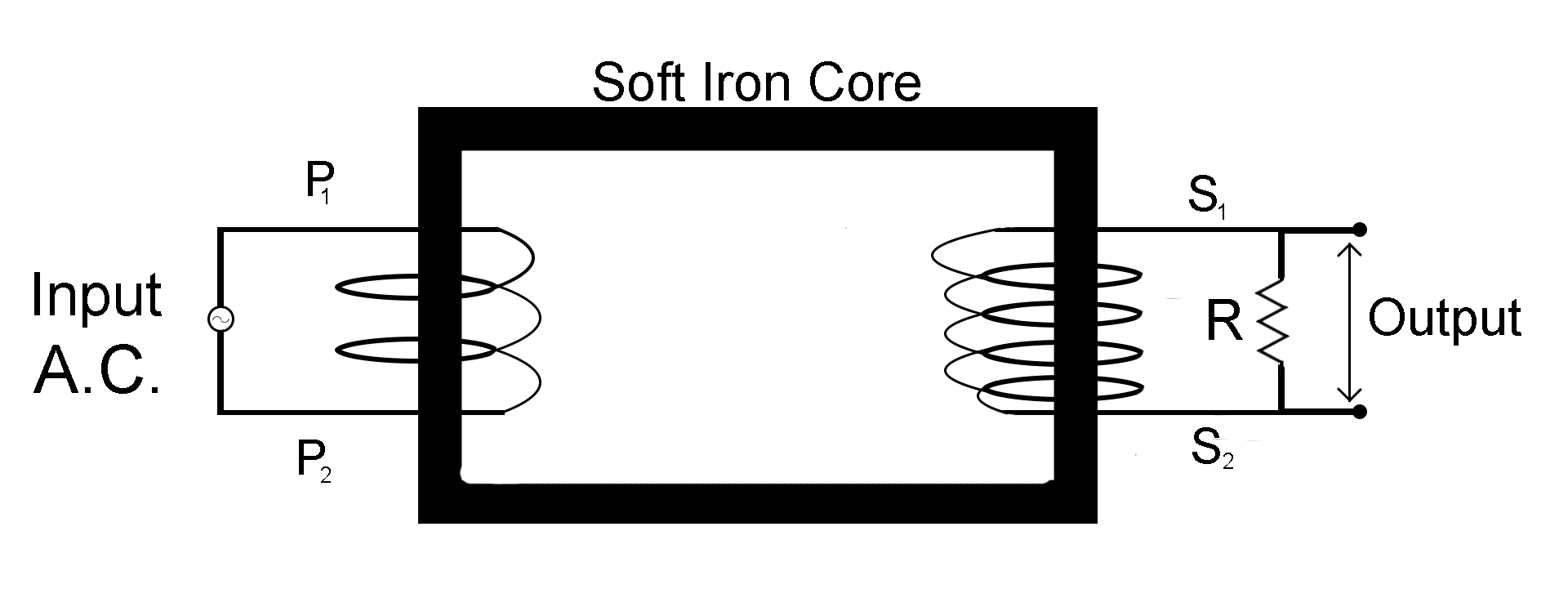
What is a transformer? Explain the principle, construction, working and theory of a transformer.
Answer
441.4k+ views
Hint – You can start by defining what a transformer is. Then move on to describe the principle behind the transformer. Then describe the basic setup of a transformer. Then finally write how a transformer works.
An electrical device that can change the A.C. current is known as a transformer.
Principle – A transformer works on the principle of mutual induction. Mutual induction is the phenomenon by which when the amount of magnetic flux linked with a coil changes, an E.M.F. is induced in the neighboring coil.
Construction –
A transformer is made up of a rectangular iron core. Two coils, a primary

Working -
For an ideal transformer, we consider that resistances of the primary and secondary coils are negligible.
Let the
Let’s assume that the primary winding to be a pure inductance, so here
Let that the number of turns in primary wire be
According to faraday law, the induced
Let the flux through one turn be
So
We also know by Faraday’s law
So for the primary coil this equation becomes
And for the secondary coil this equation becomes
Dividing equation 1 by equation 2
We know that
Here
For primary coil this equation becomes
For secondary coil this equation becomes
For an ideal transformer no energy is lost, so
Note – A transformer that increases the A.C. voltage is known as a step up transformer (
An electrical device that can change the A.C. current is known as a transformer.
Principle – A transformer works on the principle of mutual induction. Mutual induction is the phenomenon by which when the amount of magnetic flux linked with a coil changes, an E.M.F. is induced in the neighboring coil.
Construction –
A transformer is made up of a rectangular iron core. Two coils, a primary

Working -
For an ideal transformer, we consider that resistances of the primary and secondary coils are negligible.
Let the
Let’s assume that the primary winding to be a pure inductance, so here
Let that the number of turns in primary wire be
According to faraday law, the induced
Let the flux through one turn be
So
We also know by Faraday’s law
So for the primary coil this equation becomes
And for the secondary coil this equation becomes
Dividing equation 1 by equation 2
We know that
Here
For primary coil this equation becomes
For secondary coil this equation becomes
For an ideal transformer no energy is lost, so
Note – A transformer that increases the A.C. voltage is known as a step up transformer (
Recently Updated Pages
Master Class 12 Business Studies: Engaging Questions & Answers for Success

Master Class 12 English: Engaging Questions & Answers for Success

Master Class 12 Social Science: Engaging Questions & Answers for Success

Master Class 12 Chemistry: Engaging Questions & Answers for Success

Class 12 Question and Answer - Your Ultimate Solutions Guide

Master Class 11 Economics: Engaging Questions & Answers for Success

Trending doubts
Draw a labelled sketch of the human eye class 12 physics CBSE

a Tabulate the differences in the characteristics of class 12 chemistry CBSE

Which one of the following is a true fish A Jellyfish class 12 biology CBSE

Why is the cell called the structural and functional class 12 biology CBSE

Differentiate between homogeneous and heterogeneous class 12 chemistry CBSE

Write the difference between solid liquid and gas class 12 chemistry CBSE




